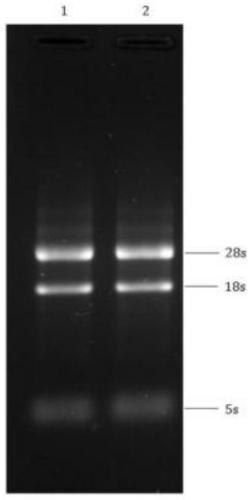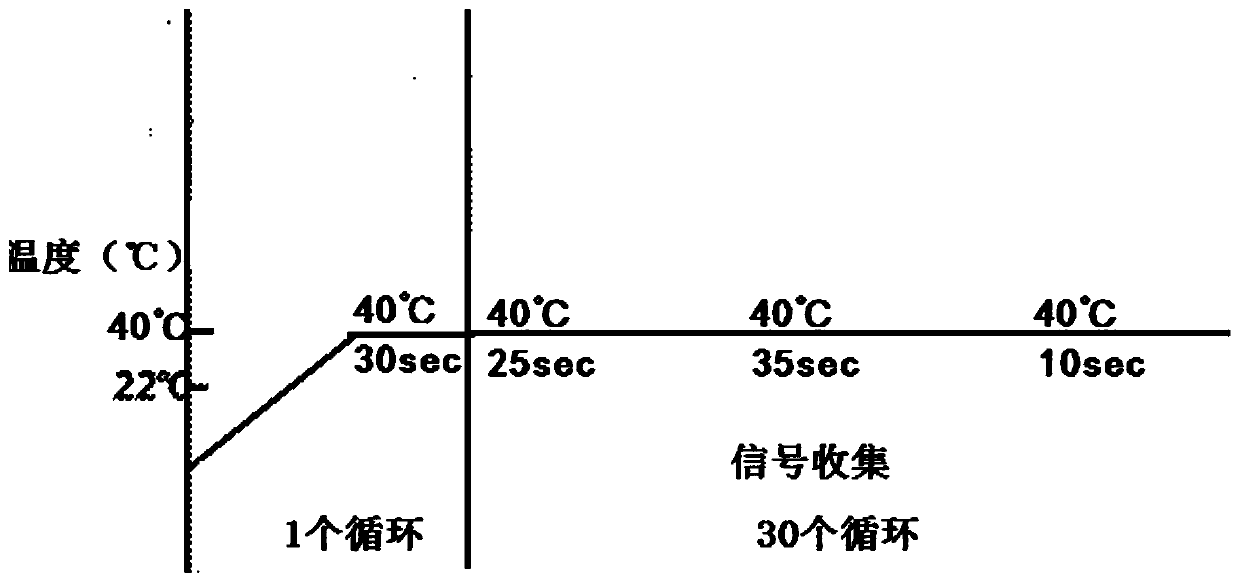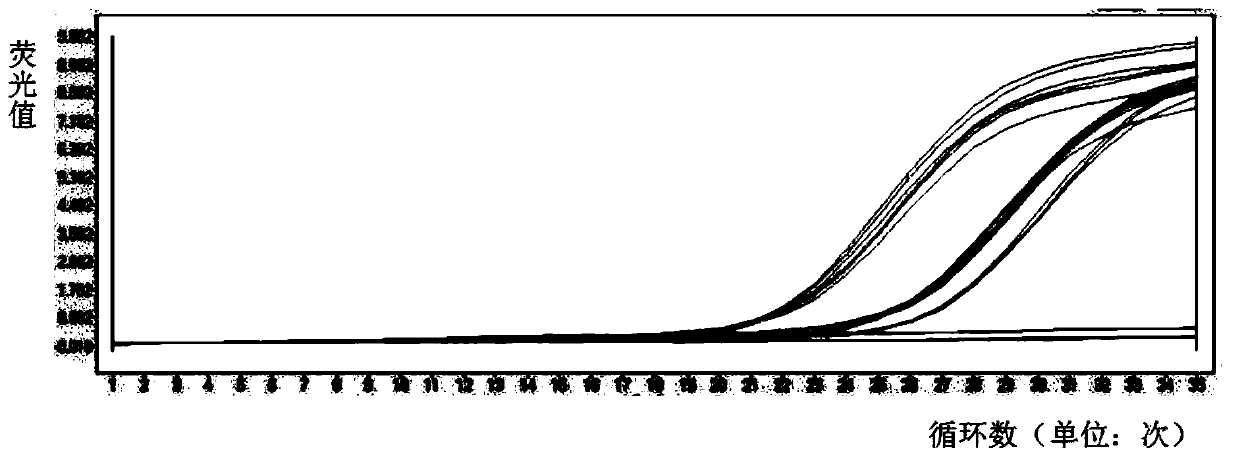Breast cancer 21 gene detection kit
A gene detection and kit technology, applied in the field of breast cancer 21 gene detection kits, can solve the problems of long time required for obtaining results, low false positives, long time consumption, etc. The effect of saving time and cost
- Summary
- Abstract
- Description
- Claims
- Application Information
AI Technical Summary
Problems solved by technology
Method used
Image
Examples
Embodiment 121
[0086] Example 1 Design of PCR primers and detection probes for 21 genes
[0087] Find the protein sequences of 21 genes on uniprot, find the corresponding information on NCBI from Refseq, find the gene nucleotide sequence from CDS, and design primers and probes according to the primer design and probe design principles of constant temperature fluorescent amplification PCR. Probes, where the principle of probe design includes that the first sequence at the 5' end cannot be a G base, and the last sequence at the 3' end must be an A base, avoiding the first four sequences at the 3' end containing 3 or more G bases base, to avoid the middle region of the probe containing two or more consecutive C bases, the designed primers and probe sequences are shown in Table 1 below, where FAM, HEX, ROX are fluorescent groups, THF is tetrahydrofuran, BHQ1, BHQ2 For the quenching group, the number of bases between the fluorescent group, THF and the quenching group can be 0, 1 or 2.
[0088] T...
Embodiment 2
[0092] Example 2 Constant temperature fluorescent quantitative PCR detection sample 21 gene levels
[0093] Process paraffin-embedded breast cancer specimens, extract total mRNA from them, take 2 μl for gel electrophoresis, and the results are as follows: figure 1 As shown, lanes 1 and 2 are the results of sample mRNA. The mRNA was then reversed into cDNA using the Quantum Gold One-Step Reverse Transcription Kit. Using cDNA as a template to detect the expression level of 21 genes in breast cancer samples, through the optimized combination of specific primers and fluorescent probes in the present invention, the accurate, simple and rapid simultaneous detection of 21 gene expression levels can be realized. At the same time, using DNA plasmids of 21 genes as positive control templates, a reaction system for detecting the expression levels of 21 genes by constant temperature multiplex fluorescent PCR was established, and finally the Ct value was used to calculate the RS value as ...
PUM
 Login to View More
Login to View More Abstract
Description
Claims
Application Information
 Login to View More
Login to View More - R&D
- Intellectual Property
- Life Sciences
- Materials
- Tech Scout
- Unparalleled Data Quality
- Higher Quality Content
- 60% Fewer Hallucinations
Browse by: Latest US Patents, China's latest patents, Technical Efficacy Thesaurus, Application Domain, Technology Topic, Popular Technical Reports.
© 2025 PatSnap. All rights reserved.Legal|Privacy policy|Modern Slavery Act Transparency Statement|Sitemap|About US| Contact US: help@patsnap.com



